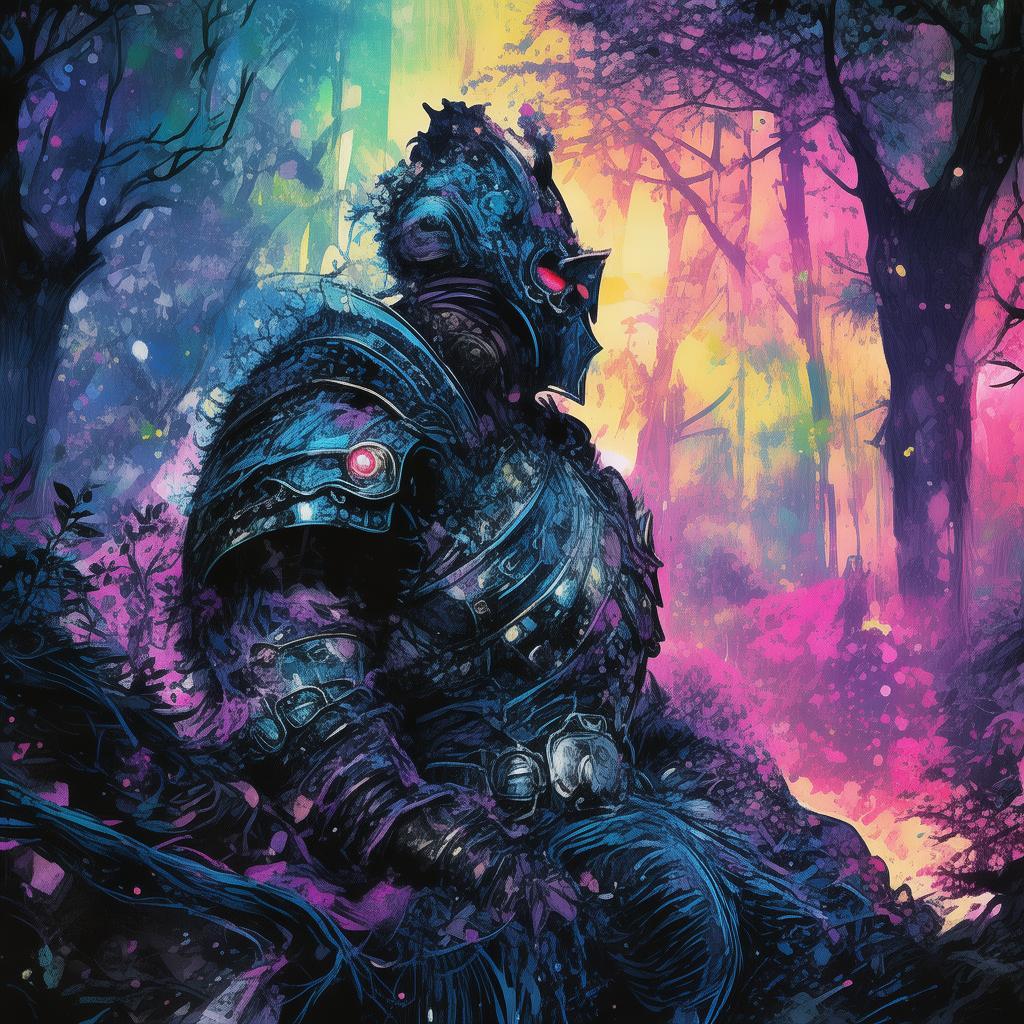The Shadows of Sorrow
In the heart of the bustling city of Paris, where the air was thick with the scent of coffee and the sounds of life echoed through cobblestone streets, there lived a painter named Elio. His brush danced across the canvas with a passion that belied the somber hues he favored. His works were stark, almost haunting, filled with the shadows of sorrow that seemed to whisper secrets from another world.
Elio's latest masterpiece was a portrait of a woman he had never met, her eyes filled with a pain that spoke of a past he could only imagine. It was titled "The Gilded Lie," a name he had chosen because he felt it encapsulated the essence of the work itself. To him, the painting was not just a depiction of a woman, but a story, one that was as complex and enigmatic as the woman it portrayed.
The city was abuzz with rumors about the mysterious painting, and Elio's reputation as an artist who painted truth into oblivion had grown. People speculated that the woman in the portrait was perhaps a lover he had lost, or perhaps she was a myth, a character from a story that never ended. Elio, however, kept his silence, for he knew the truth was a delicate thing, and the painting was his only means of speaking it.
One evening, a young woman named Elara appeared at Elio's studio door. She was striking, with eyes that mirrored the woman in the painting, and she had come to see Elio because she believed she was the woman in the portrait. The encounter was tense, filled with a sense of foreboding that was palpable in the air.
"You look just like the woman in 'The Gilded Lie'," Elio said, his voice barely above a whisper. "I have never met her, but she has become an obsession."
Elara stepped closer, her eyes reflecting the painting's dark depths. "I know why you paint her like this," she said, her voice steady despite the turmoil that must have been swirling in her mind. "She is my mother."
Elio's breath caught in his throat. "Your mother?" he asked, the word hanging heavily in the air.
"Yes," Elara replied, her voice barely above a whisper. "She was a painter once, and she painted the truth into oblivion just like you."

The revelation sent shockwaves through Elio, and he found himself questioning everything he thought he knew about the painting. He decided to embark on a journey to uncover the truth about the woman in the portrait, a journey that would take him into the heart of Paris's underbelly and force him to confront the darkest parts of himself.
As Elio delved deeper, he discovered that the woman in the painting, named Isabella, had been a celebrated artist whose work was revered for its raw honesty. But beneath the surface, there was a story of love, betrayal, and the tragic loss of a child that had left an indelible mark on her soul.
Elio discovered that Isabella had painted the portrait as a way to honor her daughter, a daughter she had lost to a mysterious illness. The painting, with its haunting beauty and raw emotion, was her last act of love, a testament to the bond between mother and daughter that transcended life itself.
Elara, it turned out, was Isabella's granddaughter, a descendant of the woman whose truth Elio had been painting. The revelation brought them together in a bond that transcended time and space, and it was through Isabella's story that Elio began to understand the true meaning of his own art.
As the truth emerged, the painting became more than just a canvas for Elio's truth. It became a vessel for Isabella's legacy, a story that had been hidden in plain sight, waiting to be rediscovered. Elio realized that the painting was not a lie, but a truth that had been painted over, a truth that was now revealed to the world.
The climax of his journey came when Elio decided to display the painting in an exhibition, not just as a piece of art, but as a testament to Isabella's life and her enduring love. The exhibition became a sensation, drawing crowds who were moved by the story of Isabella and her daughter.
In the end, "The Gilded Lie" became a symbol of resilience, of love that survives even in the face of loss, and of the power of art to heal and bring meaning to the lives of those who encounter it. Elio's painting had painted truth into oblivion, but it had also painted it back into the light, where it belonged.
The story of Isabella and her daughter, and the journey that brought them together with Elio, was one that would be told for generations. The painting that once seemed to be a lie was now a beacon of hope, a reminder that truth, even in its darkest forms, is never truly forgotten.
✨ Original Statement ✨
All articles published on this website (including but not limited to text, images, videos, and other content) are original or authorized for reposting and are protected by relevant laws. Without the explicit written permission of this website, no individual or organization may copy, modify, repost, or use the content for commercial purposes.
If you need to quote or cooperate, please contact this site for authorization. We reserve the right to pursue legal responsibility for any unauthorized use.
Hereby declared.








